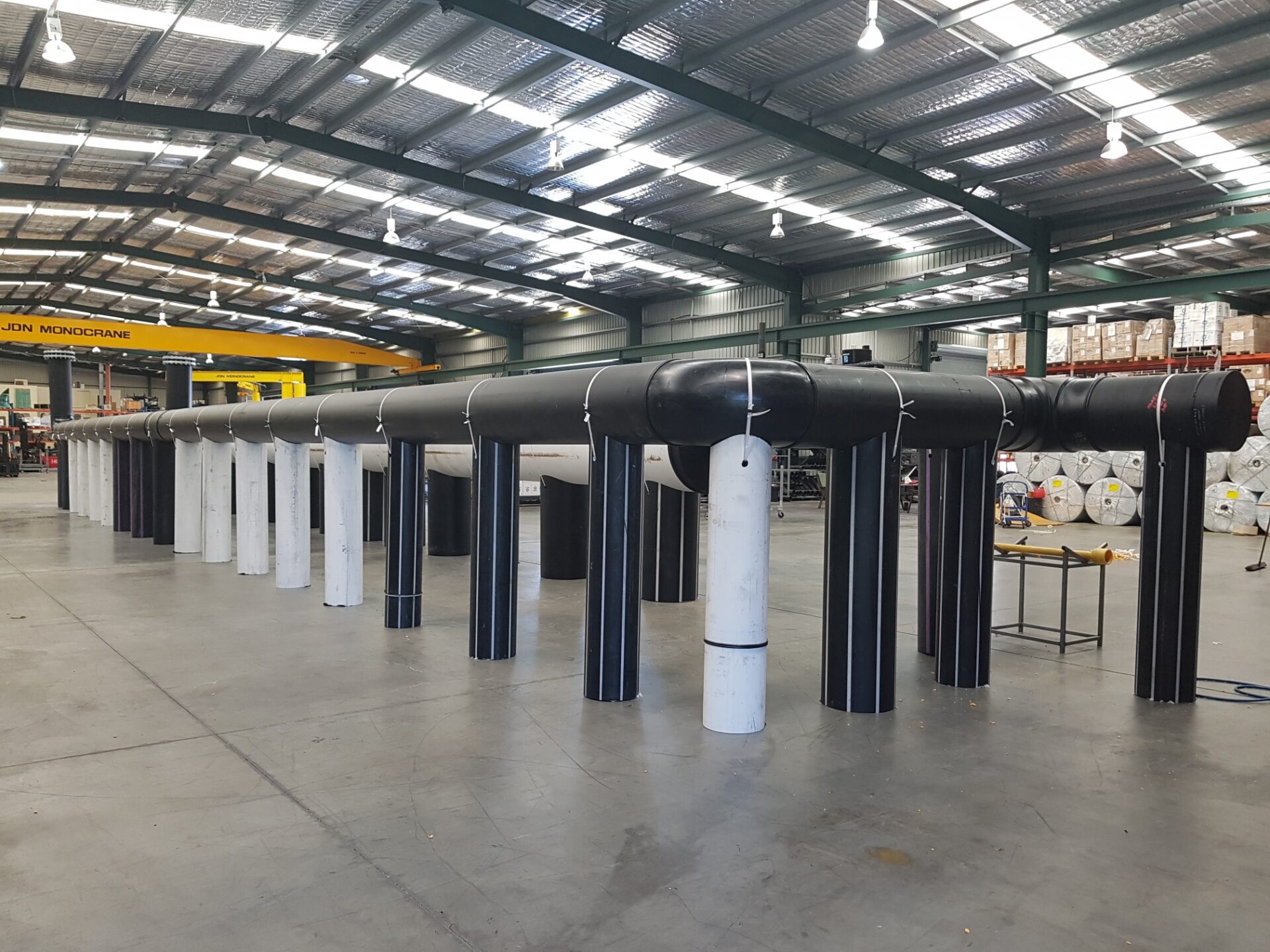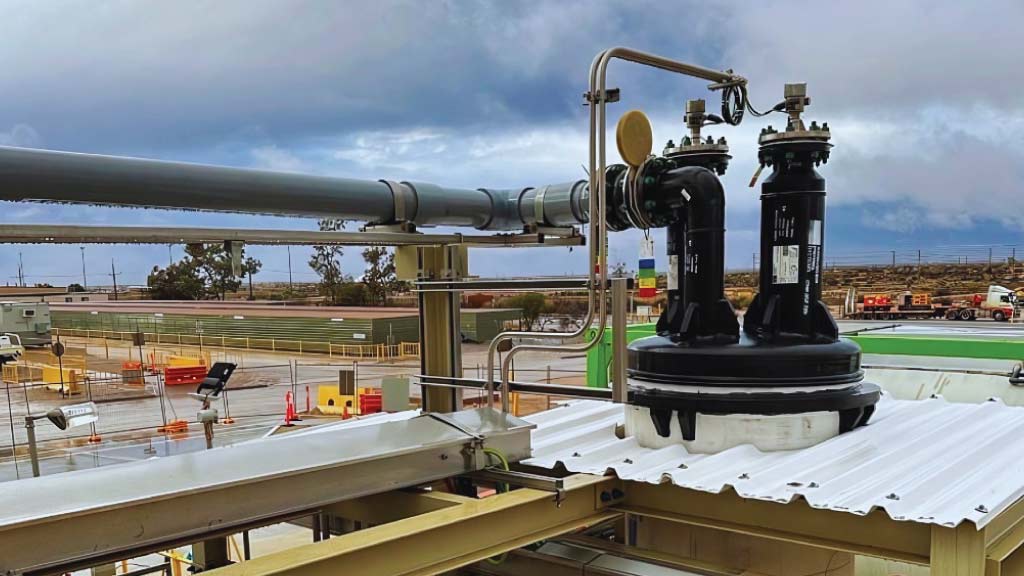A Quick Guide to HDPE Pipe Certification

At Advanced Piping Systems, we recognise that certification is playing an increasingly important role within pipe infrastructure projects across a range of industries in Australia.
Knowing that your pipe or prefabricated system has been appropriately tested to withstand a variety of operating conditions will ensure that you’re meeting required regulations, as well as helping to mitigate any potential serious safety risks.
“If there’s an EPA or environmental challenge for your project, ensuring your pipe or prefabricated system has been property tested and certified by NATA-approved test personnel is incredibly important,” said Matthew Gooden, Advanced Piping Systems’ Business Development Manager – Queensland.
“When the stakes are high — such as on a mine site where the pipe could release acids if there’s a spill, or a tailings dam where the dam wall could collapse if they had a leak — it’s not uncommon to spend more on certification than the actual construction.”
Depending on your pipe system or prefabrication and it’s intended use, there are a variety of certification tests and considerations to make when certifying pipe.
Keep reading to bring yourself up to speed and learn how Advanced Piping Systems can assist your next project with our in-house certifying services.
Methods for certification
At Advanced Piping Systems, all our HDPE pipes and fittings are approved to either Australian or German standards.
However, when these products are fabricated into a pipe system, the whole system needs to undergo a process of certification, in order to receive the ‘green light’ for installation and usage, and ensure it is performing at the correct level.
As well as having the facilities to prefabricate your pipe system, at Advanced Piping Systems we can also certify it in-house, according to your specifications.
“We have full traceability of all the products we use in the manufacturing process of any pipe or prefabricated system to start with, as the fittings and pipe have already been tested by the manufacturers prior to us making the spools,” explains Matthew.
“As well as your test results, we can also provide all of the 3.1 certificates and batch certificates, as well as electronic weld logs for all the welds we place in the spool.”
The two most common forms of testing for prefabricated pipe systems are pressure testing and burst testing.
According to PIPA, pressure testing is necessary to provide allowance for the fact that polyethylene pipes expand under pressure. As a test pressure is applied to a PE pipeline, the pipe will expand due to its creep characteristics. This will result in a drop of pressure or require the system to be ‘topped up’ to maintain the required pressure for the project.
A burst test is a controlled destruction test that is undertaken to determine the ultimate pressure resistance of your pipe system. As they are costly to perform, they are rarely required unless the system is conveying hazardous liquids or is in a critical area.
“A burst test determines what pressure the pipe will burst at,” said Matthew.
“The pipe system that requires testing must be replicated and manufactured from the same batch and same layout as the final product being installed.
“Often, when we’re working on a prefabricated pipe system, we’ll create an additional version, just to destruct and conduct a burst test on.
“Some test criteria will also require two burst tests be undertaken to make sure the results are consistent, although this is quite unusual.”
Why you should always test in-house rather than onsite
When certifying and testing HDPE pipe and prefabrications, it is best to do so in a controlled environment, such as on-site at Advanced Piping Systems.
“You should always undertake testing and certification in a warehouse or a controlled factory environment,” explains Matthew.
This is because HDPE pipes expand and contract when the pipe temperature changes, and when a pipe expands, it can generate enormous force and stress in the system.
You also need a large amount of space to lay the pipe system out.
“Testing onsite is almost impossible because of temperature fluctuations. You would never test HDPE pipe in direct sunlight, as you’d run the risk of the top of your pipe heating up and even bursting, especially if it’s a 40-degree day.”
Not only does testing in a controlled environment like Advanced Piping Systems’ eliminate temperature variations, it can also save you time and risk.
“By certifying your pipe system at Advanced Piping Systems before it is installed on-site, you’re also able to save an incredible amount of time, de-risk your project and take the pressure off the onsite installation.”
All certification tests undertaken at Advanced Piping Systems are conducted by National Association of Testing Authorities (NATA) approved test personnel.
“Having your system tested in the manufacturer’s facilities can give you, and your client, extra confidence, as you’ll receive a full report to back up all the findings, including the traceability and material certificates.
“If you want another set of eyes on the test, you’re more than welcome to invite your inspector to come along, and we’ll induct them, bring them onsite, look after them and they can watch the test take place,” said Matthew.
Case study: certifying a 13-tonne slug catcher
Recently, Advanced Piping Systems was engaged to undertake the prefabrication and certification for an extremely large, 13 tonne slug catcher to be used at a gas collection facility.
“The client approached us with the design for a prefabricated slug catcher, used to catch slugs of water and debris that come out of the earth when extracting coal seam gas.
“In total, the spool size of the prefabricated pipe system was four metres wide and 26 metres long, and weighed 13 tonnes.
“It was important to them that this system was certified, because it was a high-profile job requiring EPA approval,” said Matthew.
The slug catcher was required to be subjected to a hydro test, with the client specifying that they wanted it to be tested to 1.4 times the maximum operating pressure, for a total of six hours.
“We arranged for a certified hydro tester to come in and conduct the NATA-approved test,” explained Matthew.
“It was a big task and was undertaken over a couple of days.
“They had to get it up to pressure the night before, and then come back down a day or two later, and then they provided us with a full report.”
Once the testing and certification was complete, Advanced Piping Systems arranged for the slug catcher to be transported to the site, all in one lift.
“Given its weight and size, we arranged for a specialised seven by eight, extendable platform trailer to transport the system in the middle of the night, so as to not disrupt other traffic.”
No project is too big or too small for us at Advanced Piping Systems.
To find out more about our prefabrication and in-house certification services, contact our friendly customer service team to discuss your requirements today.





